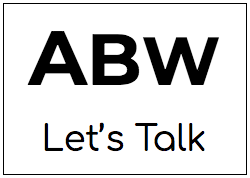Food for Thought: What Do Our Cravings Really Mean?
College students know the dangers of late-night cravings and are well-acquainted with “stress eating,” but why is it that the campus convenience stores make so much money during midterms and finals periods? Why do students crave foods and what do those cravings mean?
Studies have suggested that human beings and other organisms can select foods based on which nutrients they require. One study found that rats given the choice between bowls filled with different macronutrients managed to maintain the same health status as control rats fed a diet of nutrient-balanced rat food (Carlisle & Stellar, 1969).Cravings, therefore, according to many nutritionists, are our body’s way of telling us that our diet is missing specific nutrients, vitamins, or minerals. Some scientists argue that cravings for sweet foods can be evidence of blood sugar fluctuations. For example, cravings for chocolate may indicate a magnesium deficiency and those for red meat could indicate low iron levels.
Others argue that cravings are more related to how the reward centers of our brain are wired. According to Princeton University Professor Alan Mann, a specialist in the biocultural aspects of human diet, different foods, just like certain drugs, stimulate the production of neurotransmitters that make us feel happy, limit anxiety, or affect our brains in other ways.
Chocolate has been shown to increase levels of serotonin, a neurotransmitter that has a calming effect. Additionally, your craving for that Hershey’s bar might be due to the fact that chocolate contains phenylethylamine, which “acts like an amphetamine, stimulating your brain cells to release dopamine.” Dopamine is a neurotransmitter that stimulates the brain’s pleasure centers. (http://healthyeating.sfgate.com/chocolate-dopamine-3660.html)
Mann argues that manufacturers of processed food are well aware of the addictive properties of their salty, fatty food products and use those properties to design foods to be maximally “craveable.” Through a series of studies of rats with low- vs. high-salt diets, researchers have demonstrated that salt is addictive in much the same way that cigarettes are addictive. The findings indicated that “sodium depletion … leads to alterations in neurons in [the] nucleus accumbens,” and that the brain cells of salt-deficient rodents made proteins similar to those produced by heroin, cocaine and nicotine addicts. Human beings, therefore, may react in a parallel way, with our brains re-wiring to associate salty foods with a pleasure similar to that of an addict taking a drag from a much-craved cigarette.
It is clear that food cravings are about more than just nutritional needs, but just how big an effect the salt or fat content of processed food has on our diet choices remains unclear. What is certain, however, is that cultural influences, stress levels and other environmental factors have a huge impact on what we choose to eat.
Sources
- http://eds.a.ebscohost.com/ehost/pdfviewer/pdfviewer?sid=ef250cee-b109-4dbf-a592-f16090add7ed%40sessionmgr4004&vid=1&hid=4202
- http://www.active.com/nutrition/articles/common-food-cravings-and-what-they-mean
- http://healthyeating.sfgate.com/chocolate-dopamine-3660.html
- http://www.dailymail.co.uk/health/article-2013703/Why-salt-addictive-It-stimulates-brain-cells-just-like-cigarettes-hard-drugs.html
- http://www.jneurosci.org/content/22/11/RC225.full.pdf



